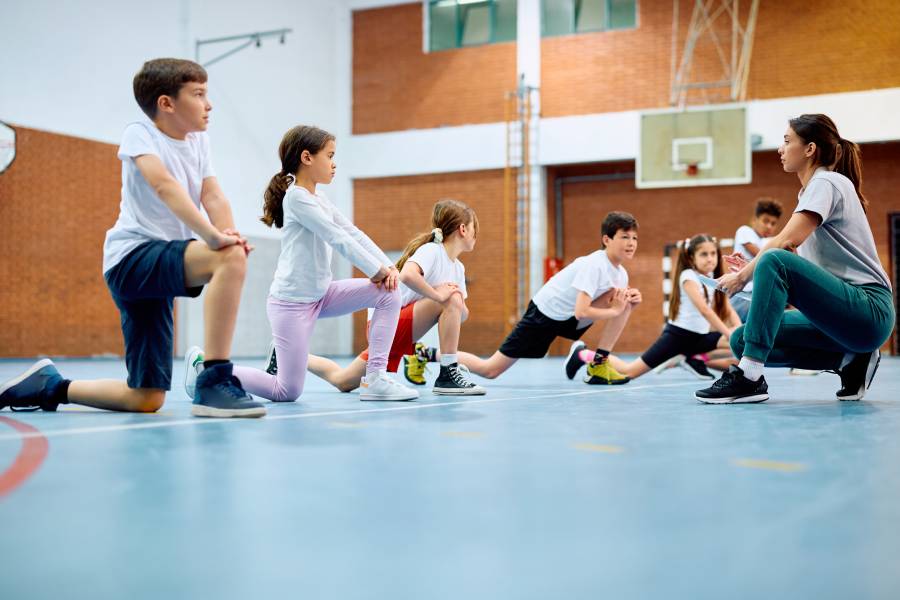|
The researchers of the Physical Literacy Research Centre (CIAM) of the Universidad de La Frontera (UFRO) analysed the active behaviour of children in the La Araucanía Region in order to understand the relationship between motor competence, motivation and the levels of physical activity in schoolchildren. |
Motor competence describes the ability to execute fundamental motor skills and is one of the skills that we should promote during childhood to ensure the children’s comprehensive development. A high motor competence allows the child to ride a bicycle, run, jump the rope, and participate in other games and activities. However, something so simple can turn into a problem for those who do not develop these skills, which leads to anxiety, frustrations and a lack of motivation to participate in physical activity. The consequence can be problems such as the development of an inactive lifestyle. According to the World Health Organization (WHO) and its reports on physical activity and sedentary behaviour (WHO 2021), children and adolescents should carry out at least 60 minutes of physical activity every day of the week, especially activities of moderate to vigorous intensity. The study “Motor competence, motivation and enjoyment in physical education to profile children in relation to physical activity behaviours”, carried out by the Physical Literacy Research Centre (CIAM) of Universidad de La Frontera (UFRO) in collaboration with researchers from Germany, Switzerland and Spain, and published by the prestigious journal “Physical Education and Sport Pedagogy”, shows that these WHO recommendations are not being met, what, in addition to the low levels of motor competence, might have multiple health consequences both in adolescents and adults. THE STUDY The study evaluated 730 schoolchildren from 5th and 6th grade of primary school in the La Araucanía Region, Chile, and the results show that 78% of the children have low levels of motor competence and only a few meet the physical activity recommendations. In addition, those schoolchildren with a high perceived motor competence and a high motivation and enjoyment of physical activity class were more active and presented a lower Body Mass Index. That shows the importance of affective and psychological factors for the promotion of an active lifestyle. According to Dr. Jaime Cárcamo, the director of CIAM UFRO, the study shows that the level of motor competence and physical activity of the schoolchildren allows understanding how the perception of competence and motivation could be determining factors for the development of motor competence and the regular practice of physical activity in schoolchildren. “This relation is essential, not only for physical education class at school but also for the promotion of physical activity in our society. There are highly motivated children, but their enthusiasm contrasts with their performance in tasks such as bouncing a tennis ball against a wall and catching it, or something as common as jumping the rope, an exercise that more than 80% of the children in our study were not able to carry out,” Dr. Cárcamo explained. The academic Dr. Isaac Estevan of the University of Valencia, Spain, who is also one of the co-authors of the study, indicated that “the impact of this research is not limited to the academic field, since its results have important implications for physical education class and the promotion of an active and healthy lifestyle. The results also may affect our view on motivation in the field of sports and physical activity in general. Therefore, we hope that this study will be useful to physical education teachers and the decision-makers when it comes to policies in this field”. NEED FOR ACTION In the analysis of the study, the researchers found that although the majority of the children presented low levels of motor competence, there is a group with high levels of motivation and enjoyment regarding physical education class. We could use that as an opportunity to improve their motor competence through pedagogical strategies and to consolidate their motivation for physical activity. The researchers of the Physical Literacy Research Centre (CIAM) also recommend that the parents promote their children’s motor competence as much as possible. That could be through actions such as playing with them, taking them to the playgrounds, and reducing screen time (in front of the television, tablet, or mobile phone). Currently, CIAM is actively training physical education teachers and the idea is to implement a platform in the future, where teachers and parents can easily evaluate the motor competence of their children or students, as well as to provide recommendations to promote motor competence and the practice of physical activity. In addition, CIAM develops continuing research projects to better understand the issue and to contribute to this important field of knowledge. The publication of this study in the journal “Physical Education and Sport Pedagogy” is an important achievement for CIAM UFRO, since the Q1 journal is considered one of the most important ones in the field of physical education. That also underlines the relevance of this study for the international scientific community. The authors hope that this work will be the starting point for future research that contributes to the improvement of physical education classes and the promotion of physical literacy in Chile.
Written and translated by: UFRO Communications Office
|





